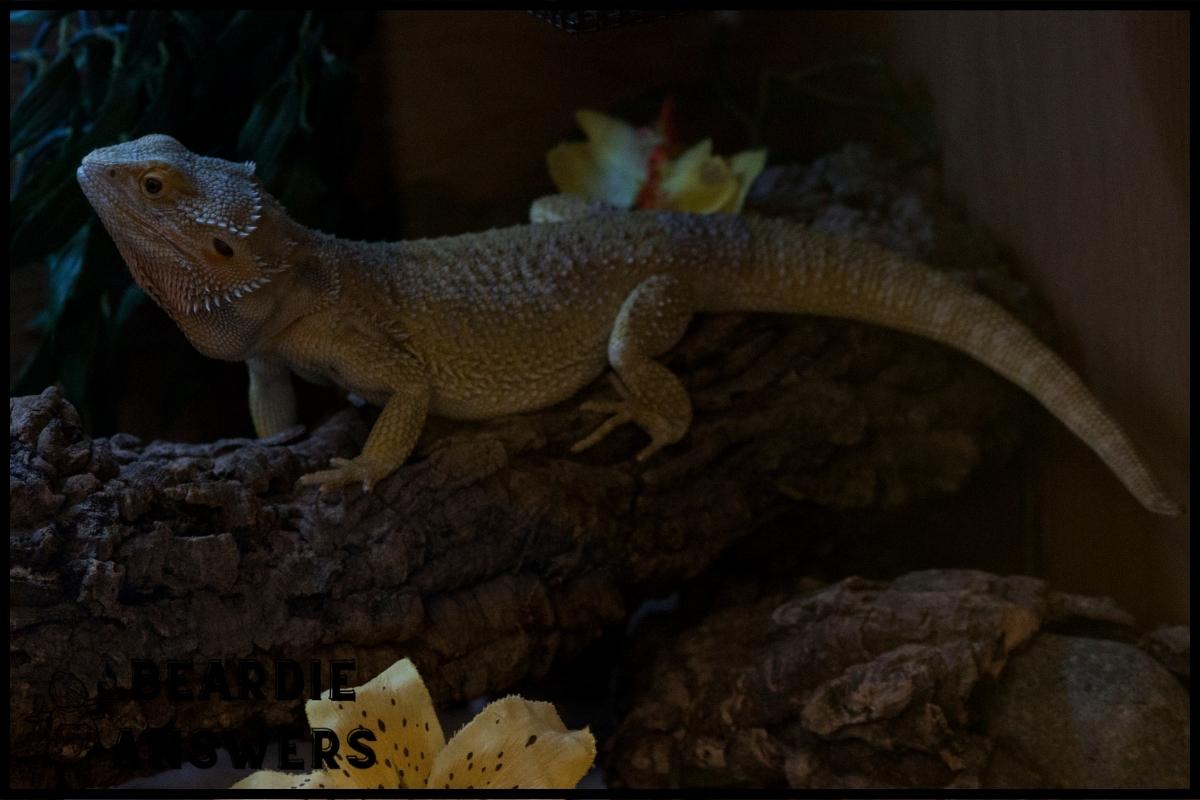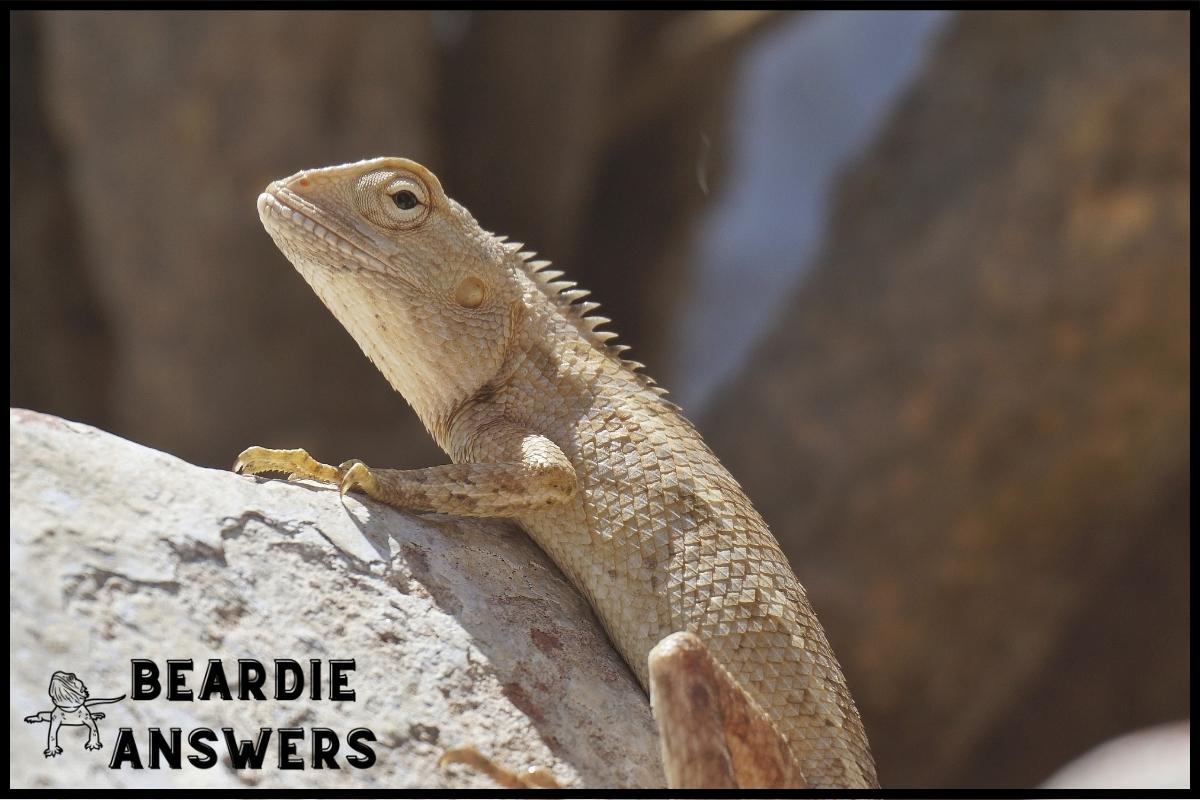The price of a blue bearded dragon can vary depending on several factors, including the breeder’s reputation, the dragon’s age, size, and color intensity, as well as the supply and demand in the market. Blue bearded dragons are a rare morph, which can make them more expensive than other color variations. It’s always recommended to purchase a dragon from a reputable breeder who can provide detailed information on the dragon’s genetics and health history to ensure you’re getting a healthy pet at a fair price.
What You'll Learn
Factors That Affect Price
The price of a blue bearded dragon can be affected by several factors, most notably genetics and breeding practices.
Genetics play an important role in determining the cost of any animal, as those with rarer traits or higher levels of quality will typically come at greater expense.
Breeding practices also factor into the equation; experienced breeders may charge more for their animals due to their expertise and knowledge in producing high-quality dragons.
Additionally, supply and demand can cause prices to fluctuate depending on availability.
In light of these considerations, it’s important to understand that there is no set price tag when buying a blue bearded dragon.
Each breeder will have different rates based upon what they offer and how much experience they possess.
It’s wise to research various sellers before making a purchase decision so you know exactly what you’re getting for your money.
With this information in mind, let’s look at where one might find a blue bearded dragon for sale.
Where To Buy A Blue Bearded Dragon
According to recent studies, there has been a large increase in the popularity of blue bearded dragons as pets. This surge in demand for these unique creatures has made them increasingly difficult to find from local breeders.
However, with some research and patience, it is still possible to get your hands on one of these magnificent reptiles.
In terms of finding a local breeder who sells blue bearded dragons, you can begin by searching online or asking around at pet stores in your area. If no viable options are available locally, then you may have to look into ordering one online. In this instance, be sure to factor in additional shipping costs when calculating the overall price.
No matter where you end up buying your new companion from, make sure that they come from a trusted source and are healthy before making any purchase decisions. Taking the time to do so will ensure that you get an amazing experience out of owning your own blue bearded dragon!
Cost Of Equipment And Accessories
When looking to buy a blue bearded dragon, it’s important to consider all of the associated costs. Not only will you be paying for the price of the beardie itself, but there may also be additional costs such as shipping fees and vet bills. It’s essential to budget for these extra expenses so that you can ensure that your new pet is properly taken care of.
Shipping costs can vary depending on the distance between where you are located and the breeder or store from which you purchased your beardie. If possible, try to find someone local who is selling one so that you don’t have to worry about incurring any additional charges beyond what was paid for the dragon itself.
Additionally, make sure to factor in potential vet visits into your budget; it’s always best to err on the side of caution when it comes to your pet’s health!
Having considered all of these factors before purchasing a blue bearded dragon will help set you up for success and provide peace of mind regarding their well-being. Knowing what type of environment they’ll need and how much time they require should also be part of this decision-making process – after all, owning a pet is an incredibly rewarding experience but requires responsibility too.
With careful consideration, finding a happy and healthy companion has never been easier!
What To Look For When Buying A Blue Bearded Dragon
When buying a blue bearded dragon, it’s important to make sure it’s in good health, and that its morphology is what you expect.
You should also ask the breeder any questions you have so you can ensure you’re getting the right dragon for you.
Health
When buying a blue bearded dragon, you need to ensure that its health is taken into account. This includes understanding their dietary requirements and making sure they have regular vet visits for checkups.
Bearded dragons require a varied diet of insects such as crickets and mealworms in addition to fresh vegetables like kale or squash.
It’s also important to keep an eye on the humidity levels inside your beardie’s enclosure, which should always be between 30-50%.
Taking care of these things will help make sure your new pet remains happy and healthy for years to come!
Morphology
In addition to ensuring their health, another thing you need to consider when buying a blue bearded dragon is its morphology.
This refers to the genetic mutation that causes the color mutation in these reptiles.
It’s important to keep an eye out for any irregularities or deformities before making your purchase.
By doing this, you can make sure your new pet has the best chances at living a long and healthy life!
How To Care For A Blue Bearded Dragon
Caring for a blue bearded dragon is both rewarding and challenging. Blue dragons require specialized care, including dietary needs and enclosure setup, in order to thrive. It’s important to understand the basics of caring for your pet before bringing one home.
When it comes to diet, blue bearded dragons are omnivorous animals that eat both plant-based foods and protein sources such as crickets or mealworms. This should be supplemented with vitamins and minerals designed specifically for reptiles. Additionally, they need access to fresh water at all times; providing them with a shallow dish can work well here.
To replicate their natural habitat, you will also want to provide an appropriate environment inside their enclosure. The ideal temperature range is between 80°F (27°C) during the day, dropping down to 75°F (24°C) at night.
To achieve this warmth gradient, use either adjustable ceramic heat emitters or overhead basking bulbs on one side of the tank with another light source on the other side for nighttime temperatures. Providing plenty of hiding places and branches throughout the enclosure is also essential for your dragon’s mental health and wellbeing.
With proper care and attention, owning a blue bearded dragon can be incredibly rewarding!
Benefits Of Owning A Blue Bearded Dragon
Continuing on from the previous section, owning a blue bearded dragon offers many benefits.
One of them is that they have unique breeding genetics which makes their appearance one-of-a-kind. This means you won’t find two dragons that look exactly alike and it can be fun to watch your pet morph as it grows up.
Another benefit of having these beautiful creatures in your home is that they are relatively easy to care for due to their simple diet requirements. They primarily eat greens and fruits, so there’s no need to worry about complex recipes or expensive meal plans.
Lastly, owning a blue bearded dragon allows you to enjoy their vibrant personalities; they are very social animals and love interacting with people. These lovable pets bring joy into households around the world, making them an excellent companion animal for those looking for something special in a pet.
Conclusion
Owning a blue bearded dragon is an amazing experience that can bring so much joy and color to your life. They are beautiful creatures, with their vibrant colors and playful personalities.
Plus, they’re relatively easy pets to take care of, as long as you have the necessary equipment and understand how to properly provide for them.
When shopping for one though, it’s important to consider all factors such as availability, breeder reputation, health of the animal, and cost of accessories – since these will affect the price significantly.
With research and patience however, you can find a healthy specimen at a reasonable price while providing it with only the best in care.

Hi! My name is Bryan, I am the “one behind the words” here are BeardieAnswers.com. I believe that providing quality care and nutrition is the best way to ensure the health of your pet. Every beardie is special and deserves the best care and attention. If you have questions about your bearded dragon, please don’t hesitate to ask! View My Full Author Page




